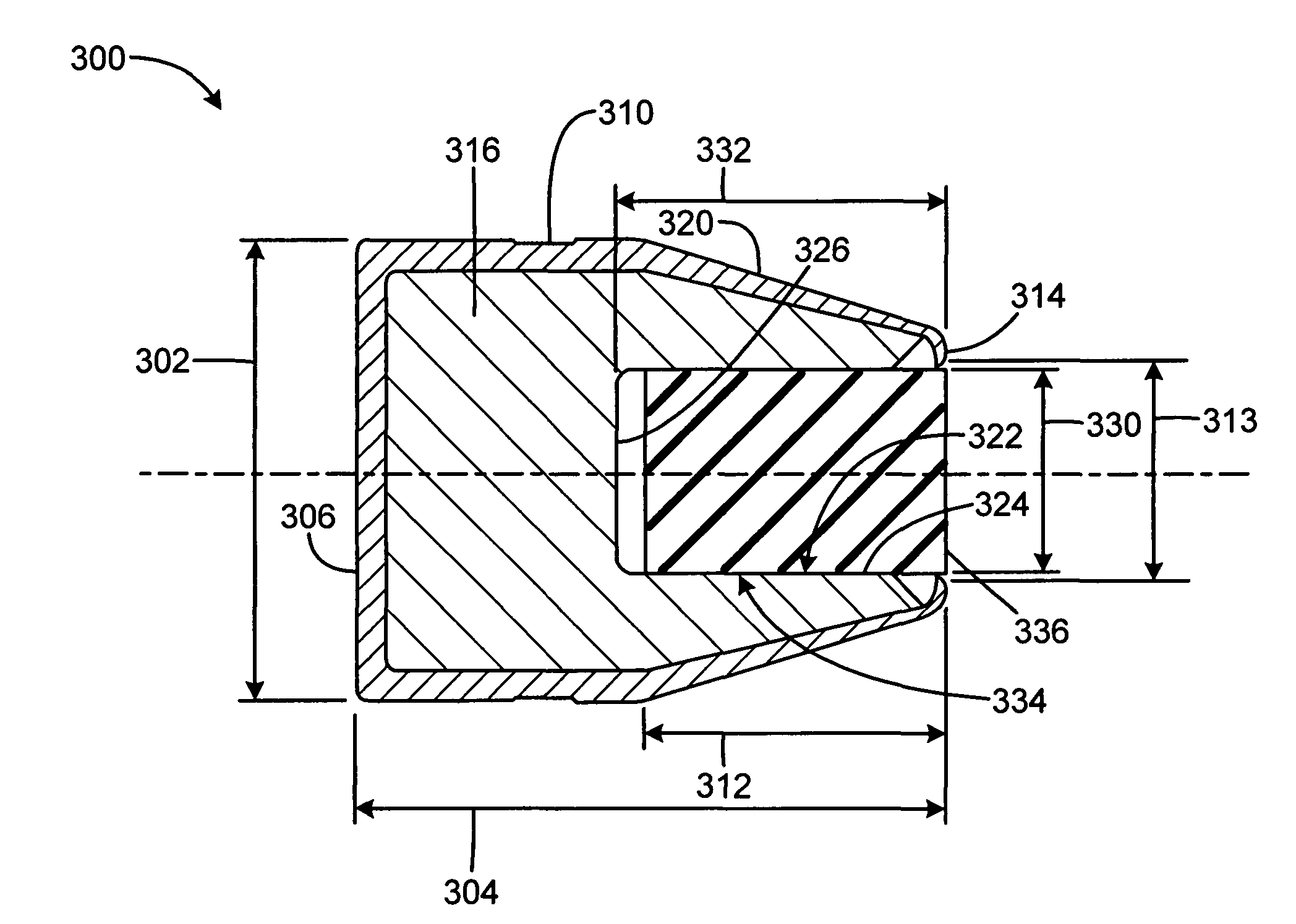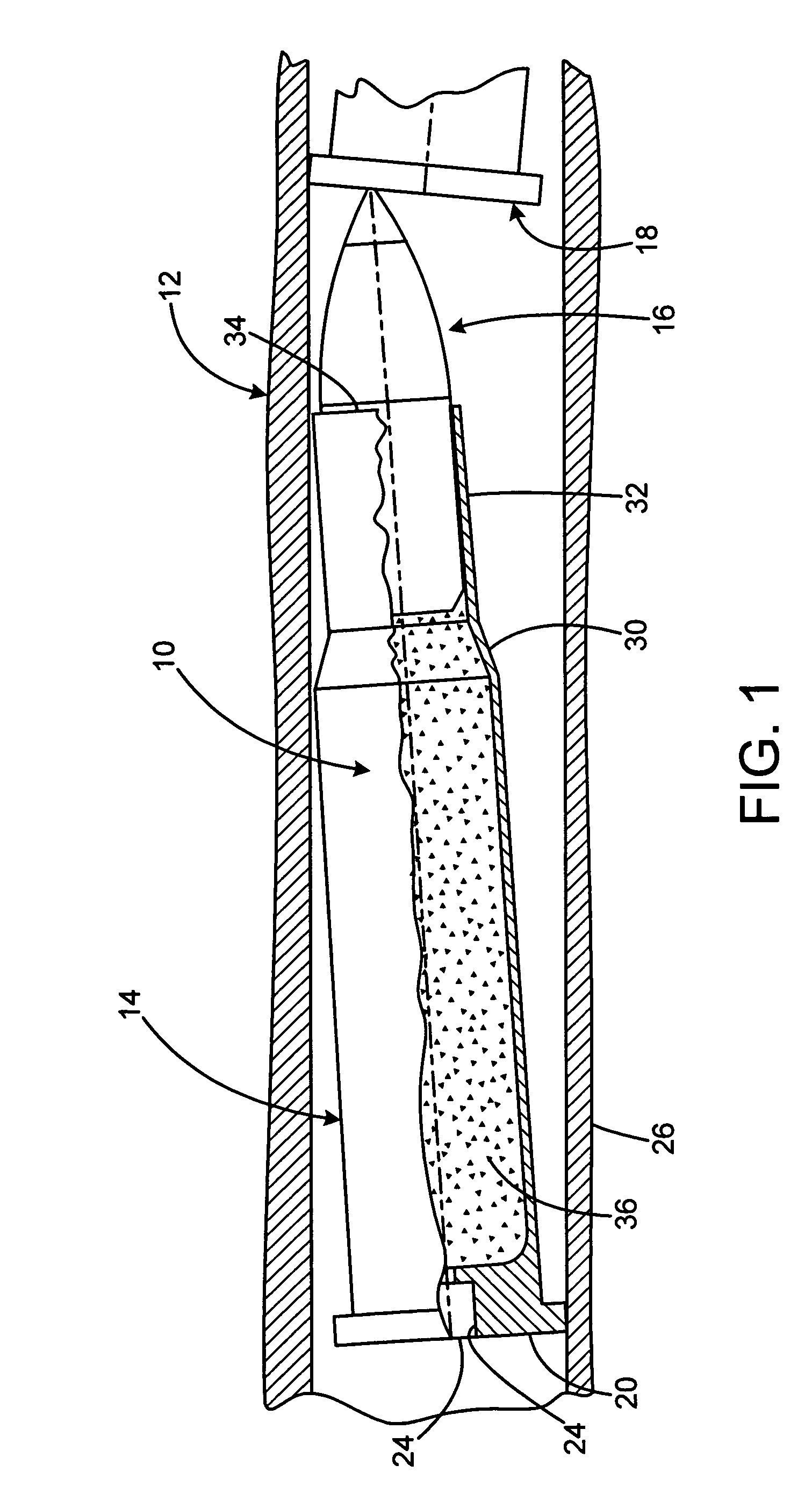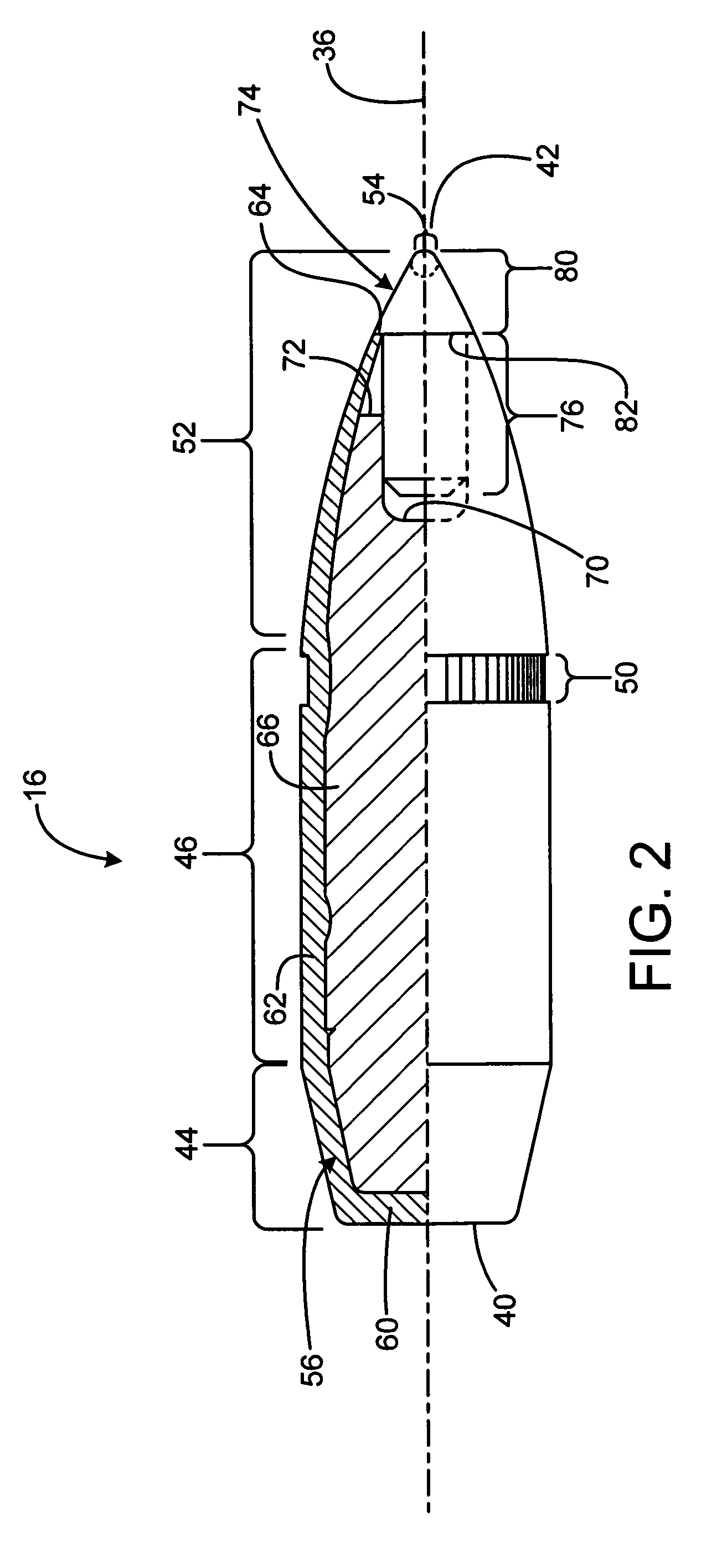Cartridge and bullet with controlled expansion
a cartridge and expansion technology, applied in the field of cartridges and bullets with expanding characteristics, can solve the problems of not being suitable for tube-magazine rifles, sharply pointed bullets common to other types of rifles employing, and raising a critical safety concern, so as to facilitate the flaring of the forward end of the hollow, the effect of killing and humane effect on gam
- Summary
- Abstract
- Description
- Claims
- Application Information
AI Technical Summary
Benefits of technology
Problems solved by technology
Method used
Image
Examples
Embodiment Construction
[0020]FIG. 1 shows a rifle cartridge 10 as loaded in a tubular magazine 12 typically attached below the barrel of a lever-action rifle. The cartridge has brass case 14, and a bullet 16. The case has a circular rear end 20 defining a central pocket 24 into which is inserted a primer. The case has side walls 26, and can have a tapered shoulder 30 leading to a reduced diameter neck, or nearly straight sidewalls that end in a forward case mouth 34. The case contains a quantity of powder 36, which is contained by the bullet 16 being partially inserted into the mouth, which is crimped to secure the bullet in place. The rear of a second cartridge 18 is shown, positioned just forward of the cartridge, illustrating how in many instances, the tip of one bullet can be positioned against the primer of the next cartridge.
[0021]The bullet 16 is a generally cylindrical body, symmetrical in rotation about an axis 36, with a rear end 40 and a forward tip 42. The bullet has an exterior surface shaped...
PUM
 Login to View More
Login to View More Abstract
Description
Claims
Application Information
 Login to View More
Login to View More - R&D
- Intellectual Property
- Life Sciences
- Materials
- Tech Scout
- Unparalleled Data Quality
- Higher Quality Content
- 60% Fewer Hallucinations
Browse by: Latest US Patents, China's latest patents, Technical Efficacy Thesaurus, Application Domain, Technology Topic, Popular Technical Reports.
© 2025 PatSnap. All rights reserved.Legal|Privacy policy|Modern Slavery Act Transparency Statement|Sitemap|About US| Contact US: help@patsnap.com



